It’s become an annual tradition: spring arrives, Eureka Earth flies over Augusta National, and we get a first glimpse at the latest changes for the upcoming Masters Tournament. Before Covid-19, we saw alterations to the fifth hole; last year, it was the 11th and 15th holes; this year, we have a monumental change to the 13th.
Alongside these significant projects, Augusta National also undertakes smaller, less publicized adjustments, such as last year’s softening of the 13th green and this year’s tweaks to the seventh. As Tiger Woods said recently, “Just look at the golf course; it looks like it’s been here for over a hundred years and hasn’t changed, and each and every year we come here, everything has changed since I first played here.”
One of the fascinating aspects of Augusta National is that, unlike other revered golf courses around the world, making changes to the course isn’t sacrilegious—it’s an annual occurrence. With that in mind, Andy Johnson, Cameron Hurdus, Garrett Morrison, and special guest Geoff Shackelford have put together a list of the next changes we’d like to see from Augusta National. These changes are rooted in two core principles:
1. Enhance the patron experience
2. Restore the intent and feel of the Alister MacKenzie design
With these pillars in mind, here are five things we’d like to see on Augusta National’s shortlist for renovations in the coming years.
Restore the seventh and 17th corridors
By Andy Johnson
In 2002, both the seventh and 17th holes at Augusta National underwent significant changes, with large-scale tree plantings on both the right and left sides of the fairway. These changes made the tee shots far more challenging but also muted the dynamic nature of each of these par 4s.
The seventh hole has morphed from a short par 4 with a wide corridor to a long par 4 with one of the course’s narrowest fairways. The most notable feature of the seventh is its shallow green that sits high above the fairway on one of Augusta National’s central ridges. This approach shot is spectacular because of the precision required, considering the green’s shallow nature and the uphill nature of the shot.
By narrowing the fairway, the club has undoubtedly made the tee shot more taxing. A wider tee shot, however, would provide more interesting options and the ability to play to a specific side of the fairway, creating opportunities for players to make the green less shallow. For example, playing up the right side of the fairway to a left pin position would suddenly make the green less shallow. With the pin on the right, you could do something similar by playing up the left side.
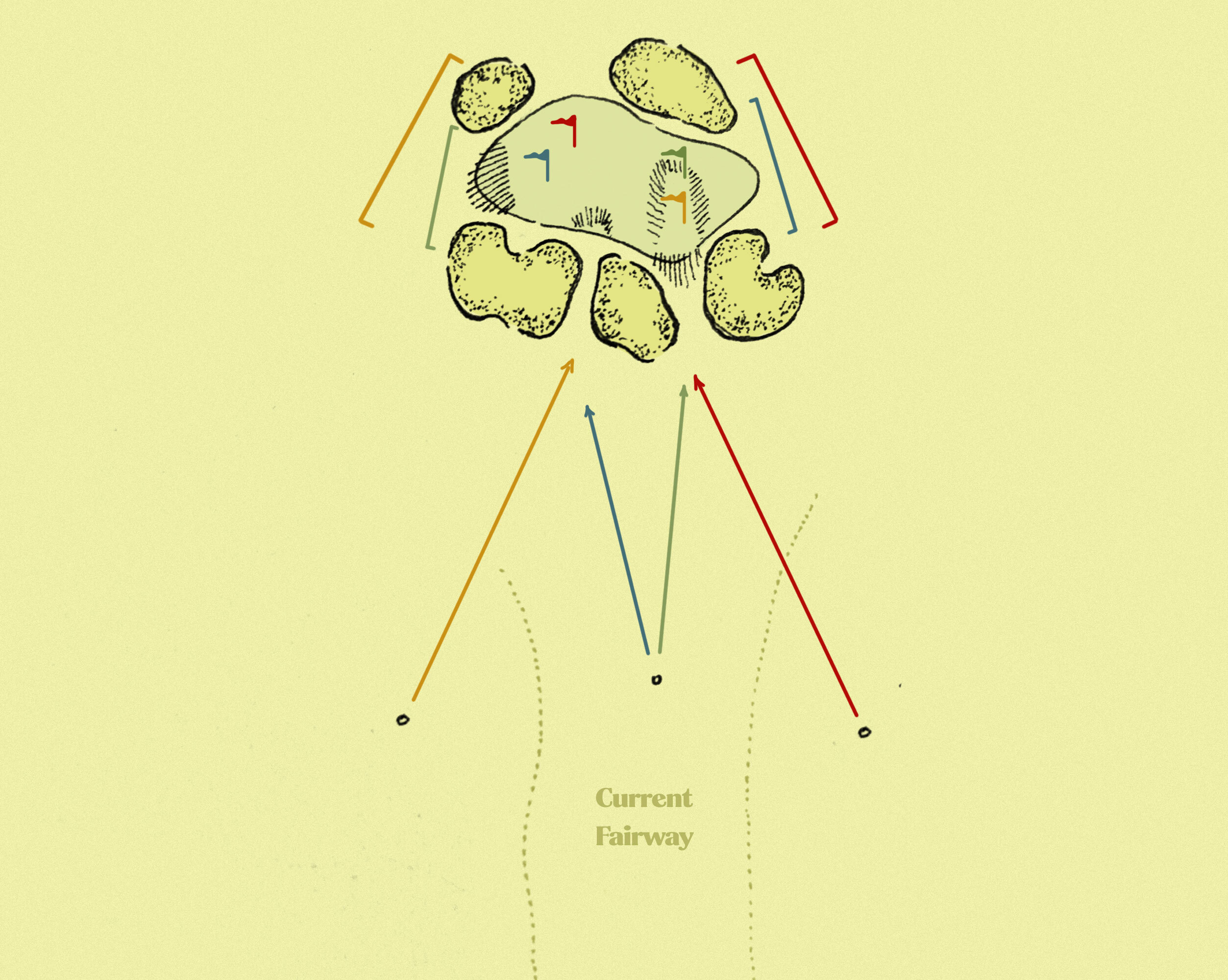
Approach angles into the seventh green at Augusta National (illustration by Cameron Hurdus)
Widening the fairway back to its original corridor would significantly enhance the strategy of this par 4. It would also create a far better patron experience, as the seventh fairway is one of the most difficult places to spectate because the pine trees have grown quite large in the past 20 years.
The reasons for restoring the corridor on the 17th are similar to the ones I just cited for the seventh: increase the opportunities to see different approach angles into a stellar green. In fact, the 17th green might be my favorite on the course. It has everything: plateaus, bowls, a gnarly false front, and severe penalties for missing. Greens like this only get better when there are more avenues to approach different pins.
-
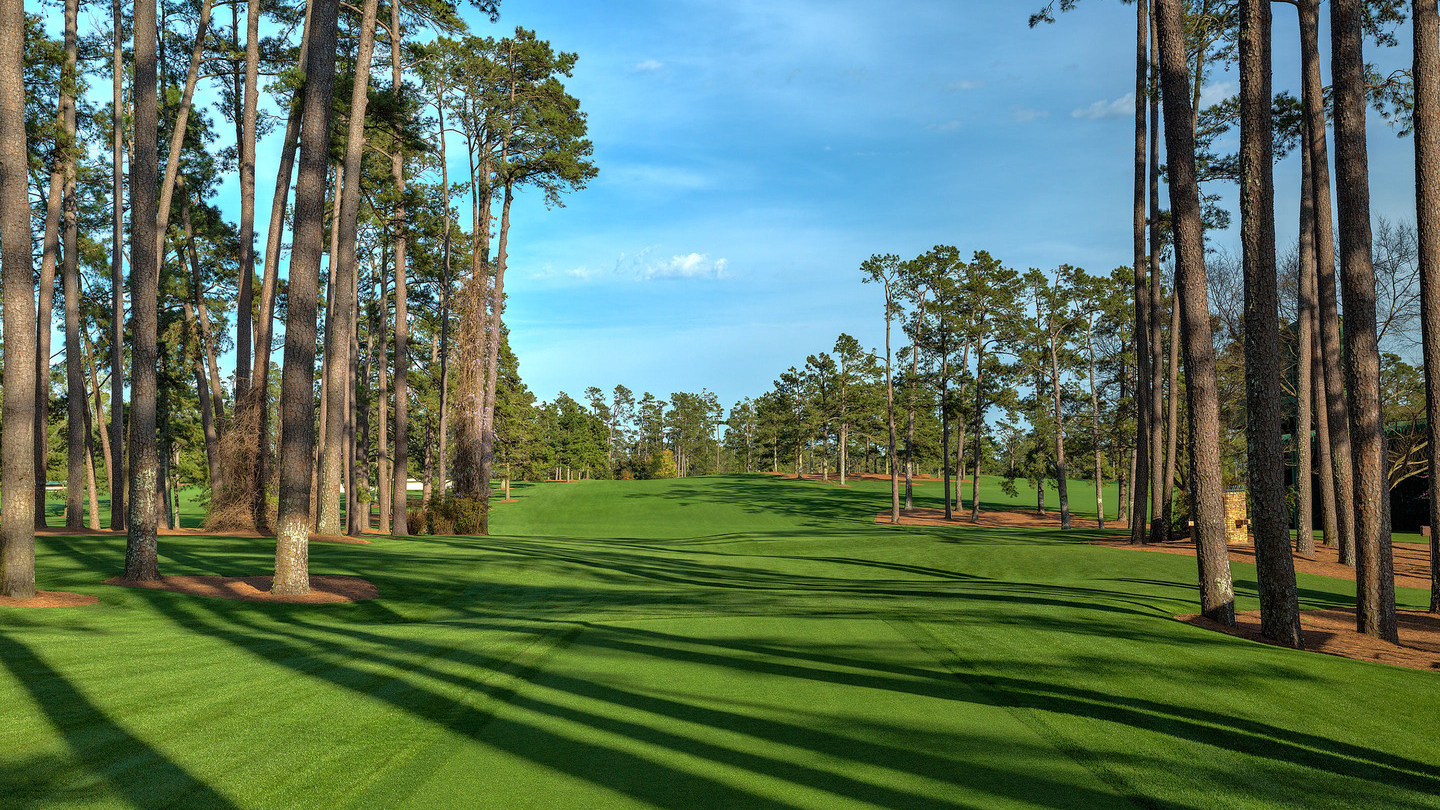
Tee view on the 17th hole at Augusta National (photo courtesy of Augusta National)
-
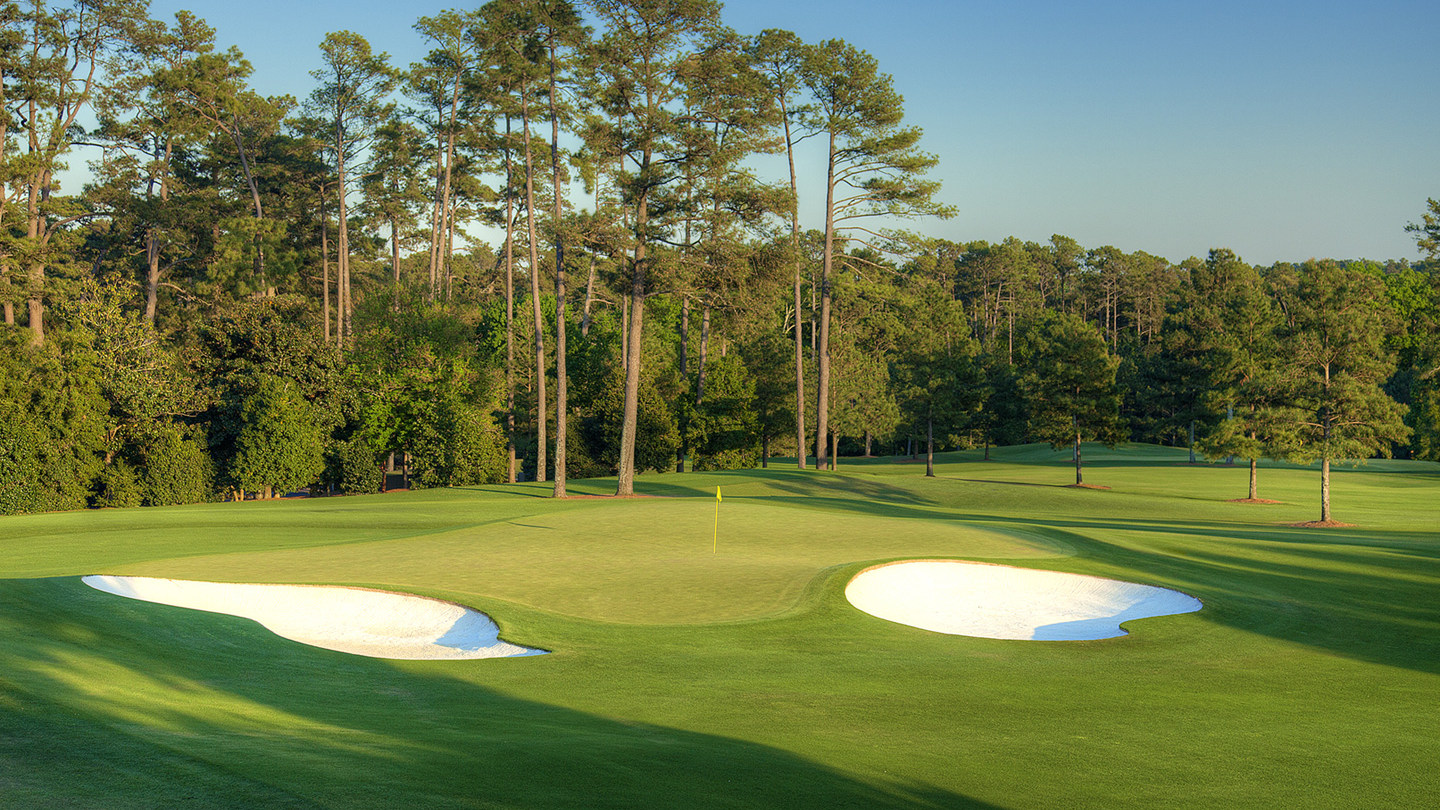
The 17th green at Augusta National (photo courtesy of Augusta National)
Since the changes in 2002, the 17th has been one of the most difficult holes on the course, but what draws us to Augusta National is the dynamic holes. It’s the holes where anything can happen, and widening the fairway would bring more drama to the finish at the Masters and once again make it easier for patrons to watch the golf without the clutter of pines between the ropes and the action.
Remove trees and pine straw
By Cameron Hurdus
The property Augusta National occupies is incredible. It’s dramatic and beautiful as it descends from the first tee to Rae’s Creek at the bottom. However, I believe that tree planting, which accelerated during the Tiger-proofing era, has diminished some of the drama. It seems that the club might be willing to reverse some of these changes, as seen with the 11th hole last year. Even Justin Thomas, whose thoughts on golf course design have not always been TFE-friendly, noted in his press conference on Tuesday that the trees on the left of the first hole keep growing and choking the landing zone (no kidding!).
A full-fledged tree-thinning project would be a welcome change. It feels like a large percentage of pines could be removed in certain spots without even affecting the (albeit modern) strategic challenge they present. This would not only allow for more interesting recovery shots from the pros, but also help open up vistas across the course, creating better sightlines for spectators and highlighting the excitement of the property. The ability to see (and hear) patrons wrapped around holes hundreds of yards away is part of what makes Augusta so remarkable, and it seems like some of that has been lost in recent decades.
As part of this project, I would also love to see the removal of a LOT of pine straw. This might be personal preference, but I don’t think it looks very natural, especially the saucers of pine straw that adorn individual trees. Short grass, like the photo below from 1987, appears more attractive to me and allows for more interesting recovery shots. I understand that maintaining a high-quality, radiant green surface under a patch of trees would be difficult, but thinning would help. Perhaps an area with a slightly different shade of green would be a step in the right direction.

The seventh hole at Augusta National in 1987
More tongue, please
Garrett Morrison
Originally, many of Augusta National’s greens featured small protruding sections, often wrapping around bunkers or other hazards. You might not want me to call these “tongues,” but I will. Apologies in advance.
Here are a few of my favorite examples of tongues from 1935 course, compared with the present-day versions of the greens:
-
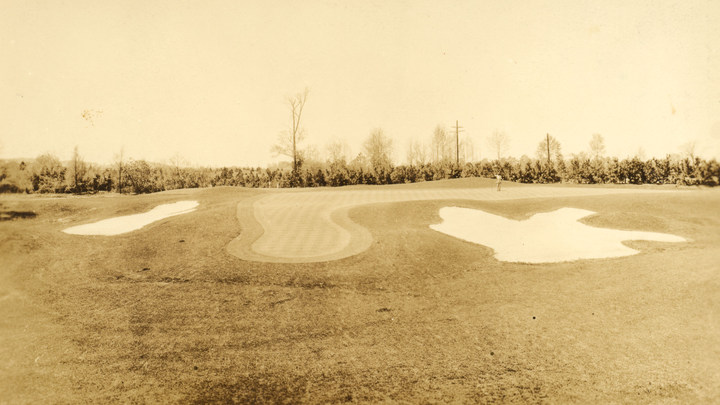
The fourth green at Augusta National in 1935 (photo courtesy of Augusta National)
-
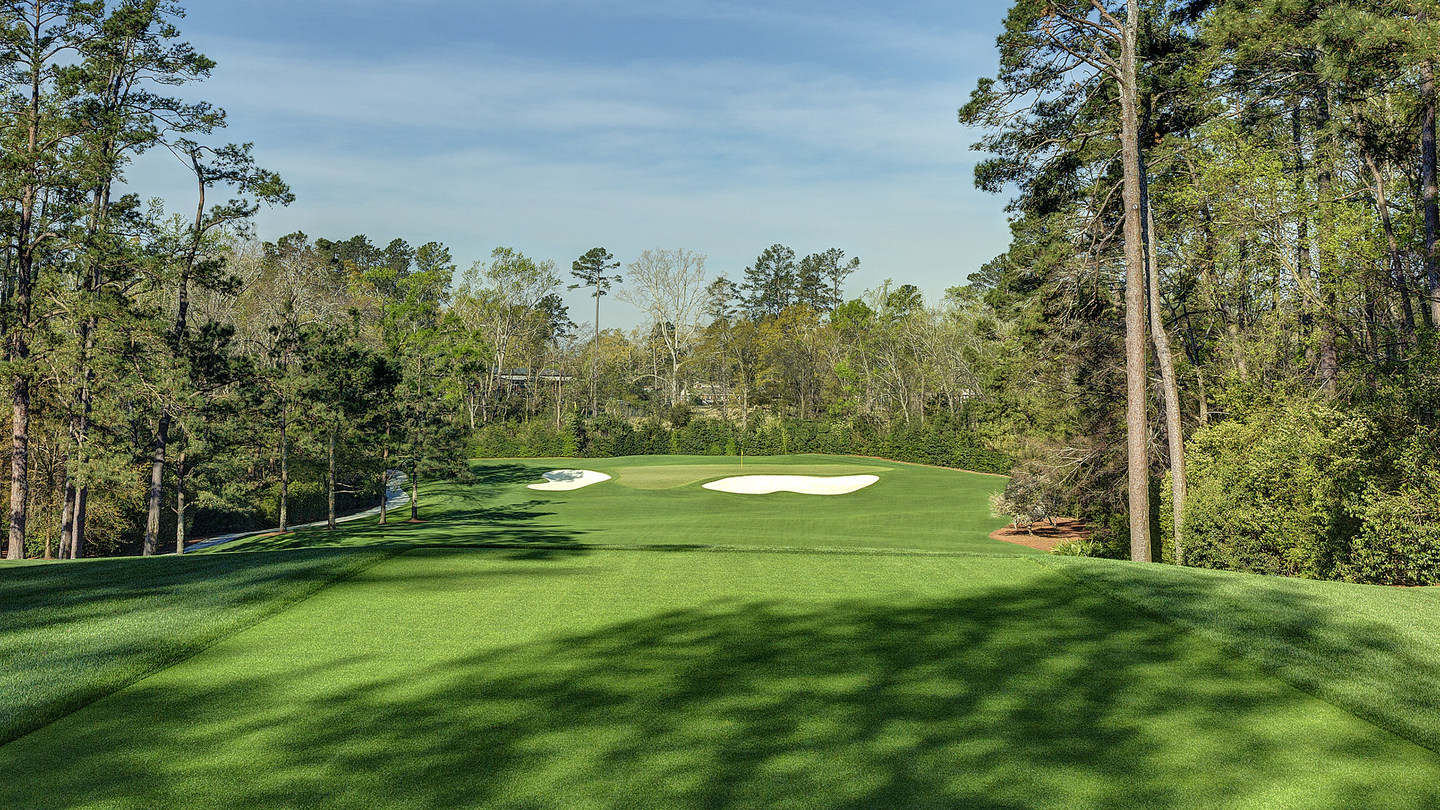
The fourth hole at Augusta National today (photo courtesy of Augusta National)
-
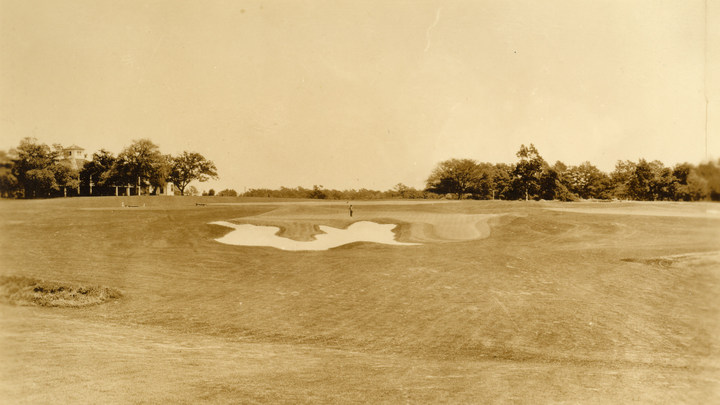
The ninth green at Augusta National in 1935 (photo courtesy of Augusta National)
-
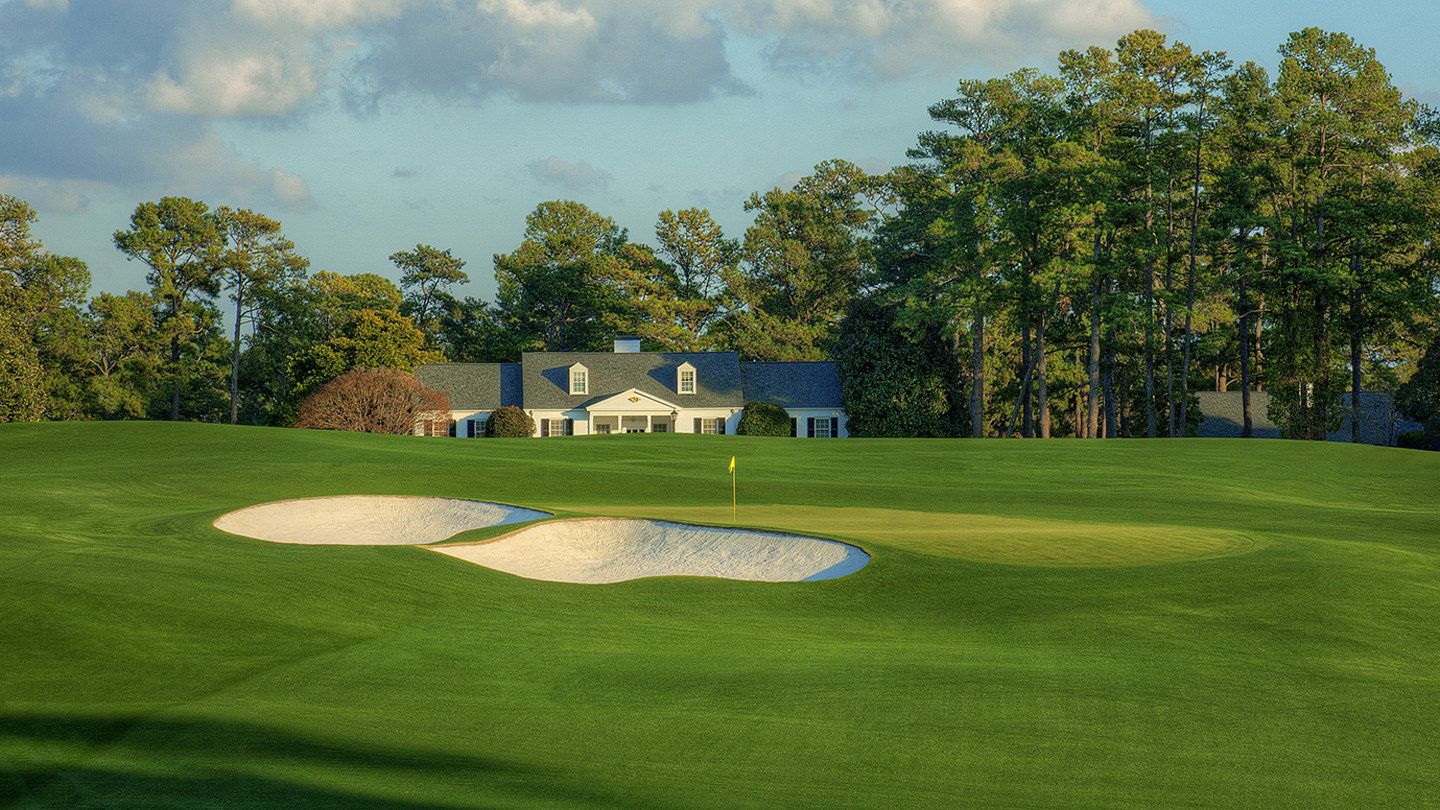
The ninth green at Augusta National today (photo courtesy of Augusta National)
-
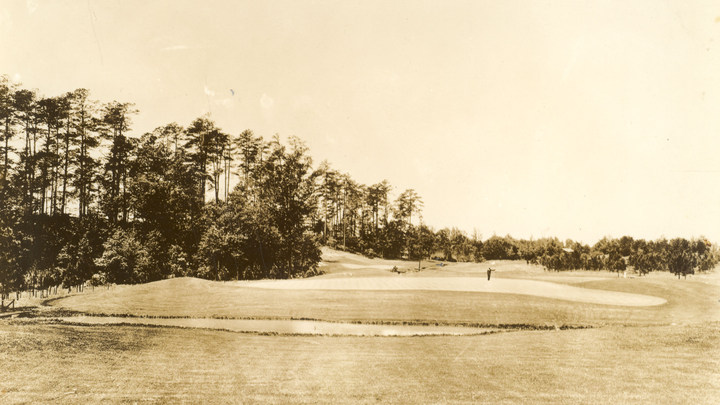
The 15th hole at Augusta National in 1935—note the extension of the green on the right, where there is currently a bunker (photo courtesy of Augusta National)
-
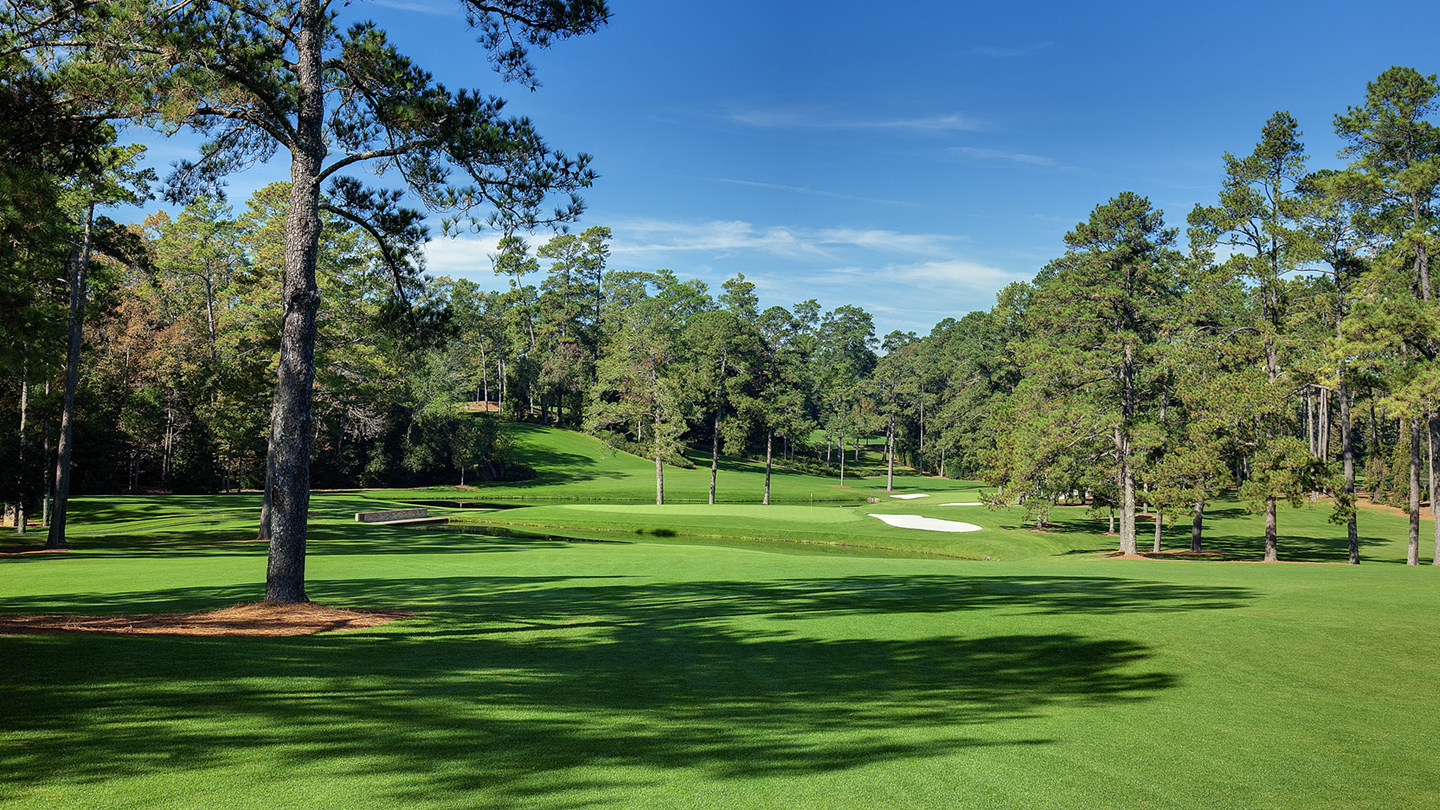
The 15th hole at Augusta National today (photo courtesy of Augusta National)
-
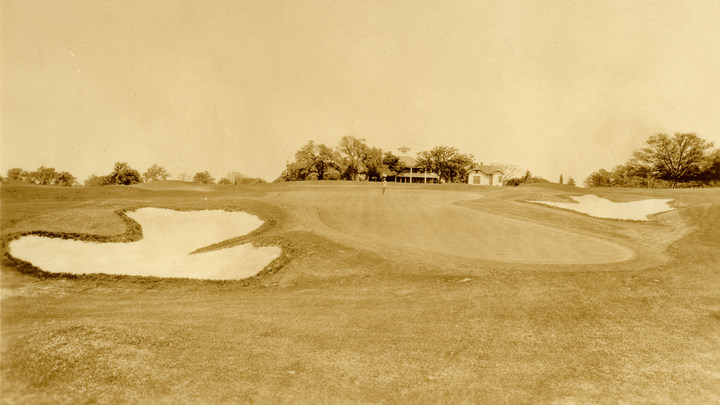
The 18th green at Augusta National in 1935 (photo courtesy of Augusta National)
-
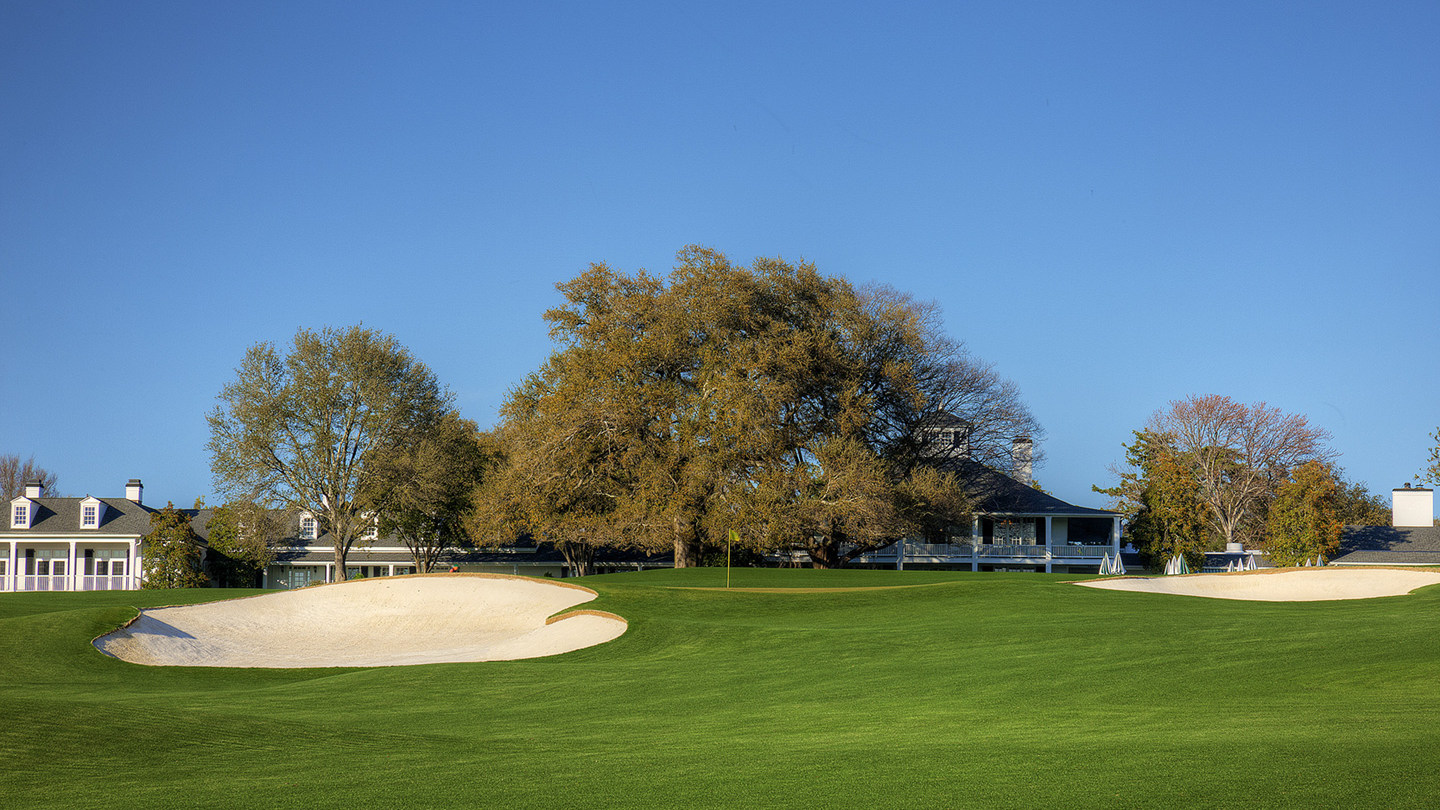
The 18th green at Augusta National today (photo courtesy of Augusta National)
Most of these features disappeared during Perry Maxwell’s renovations in the late 1930s. Restoring them would be a simple project by Augusta National’s standards, and would reintroduce some of the historical charm, creativity, and quirk of MacKenzie and Jones’s initial design. The tongues would also make play around the greens more dynamic. While most of them would be unpinnable, they could be used to run the ball up, or they could facilitate the ejection of a misplayed approach.
Harmless fun, right? Why not give it a try?
Give some ebb and flow back to the front nine
By Geoff Shackelford
As much as I’d love to see more of MacKenzie and Jones’s quirky touches restored, it’s more urgent to recapture some of the front nine’s ebb and flow that has become a constant ebb on the non-par 5s. Namely, take some fire out of the first and seventh holes. They’re restrictive and too hard. Both once had a birdie-or-bogey sensibility that was lost to excessive lengthening and narrowing. Each hole features a green that rewards a good approach and punishes the slightest miss (similar to the 17th on the back, but I’m already over my limit of one big fix). So let’s regain some width on the first and seventh holes by turning a few recently planted pines into firewood. And please, pretty please, consult the old photos to recapture the former first fairway bunker that was once artfully tucked into the hill.
Bring back ground hazards
By Cameron Hurdus
It’s clear from MacKenzie’s writings on Augusta National, as well as his sketches (and what’s still visible on the property!), that ground contours played a crucial role in the course’s design. He discusses his and Bobby Jones’s admiration for the Old Course and the implementation of design principles from some of the best holes in the UK. They minimized the number of bunkers, and there were essentially no trees between holes, making mounds and contours critical to their original strategic vision.
Over time, many of these contours have been muted or even removed. Here are a few examples:
The area between the landing zones on the 15th and 17th holes used to be a collection of moguls and mounds. Weak drives on the 15th (and tee shots that missed right on the 17th) would end up in uneven lies, potentially facing a blind shot over the largest mound.
-

The 15th hole at Augusta National in 1991
-

The 15th fairway at Augusta National in 1979
-
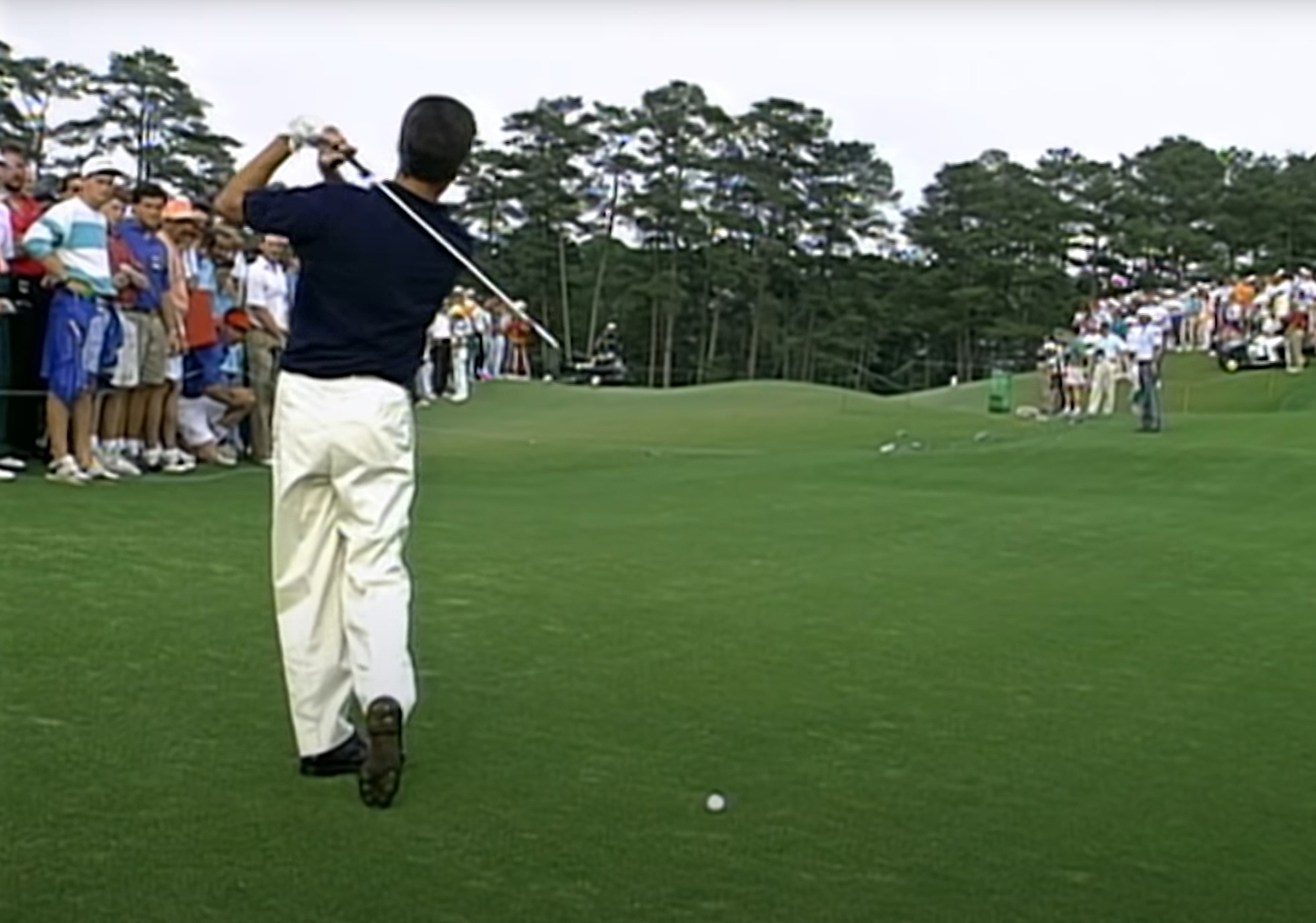
The 17th hole at Augusta National in 1991
In line with my previous thought on tree planting, sometime in the late 90s, the club began planting trees in this area, which has since become a full-blown forest. It seems the moguls that once populated this area have also been leveled.
-
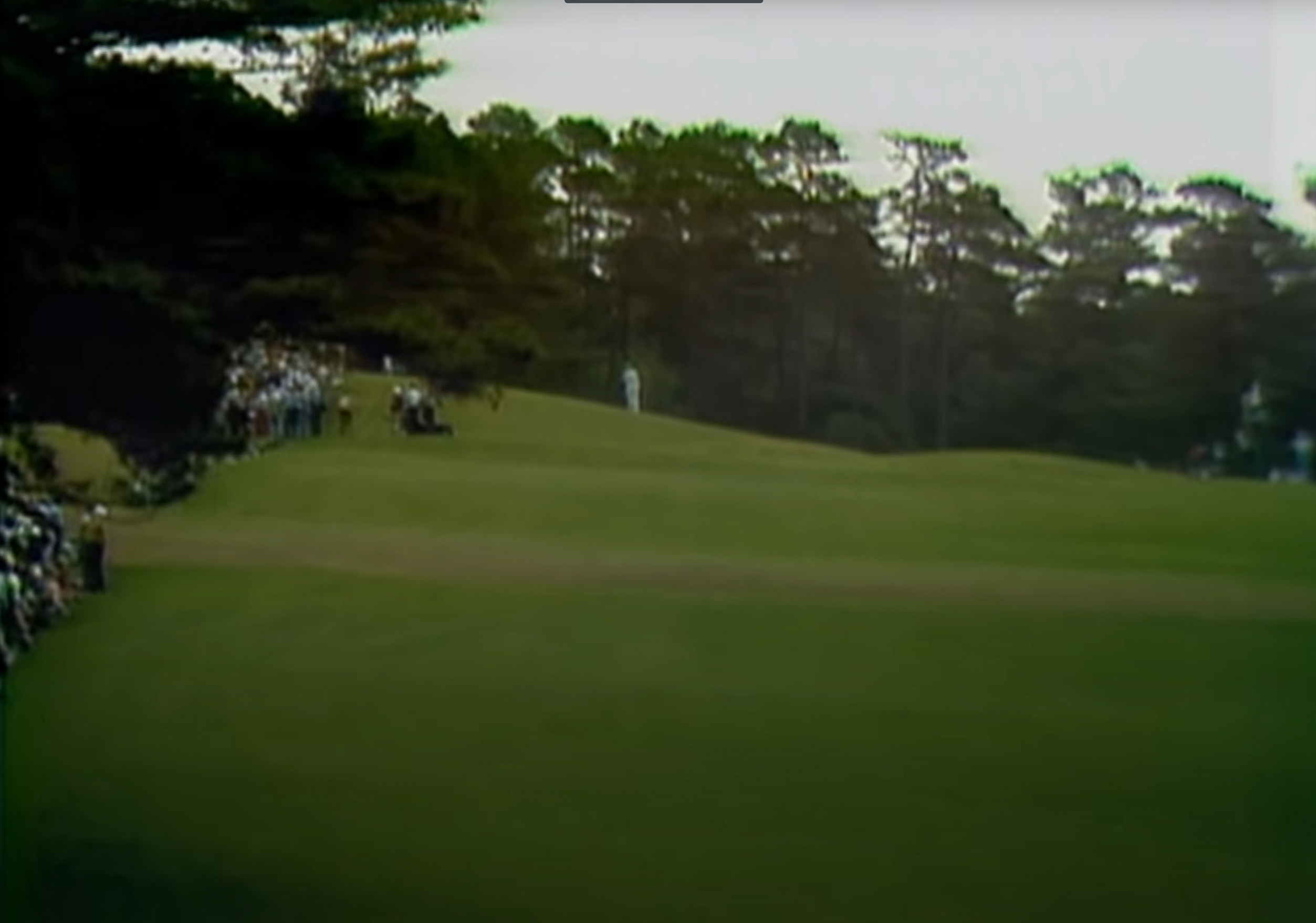
Looking back on the 15th hole at Augusta National in 1974
-

Looking back on the 15th hole at Augusta National in 2015
A similar change occurred on the 14th hole, where two large mounds framing the entrance to the green appeared to be reduced between 1997 and 1998. This is significant because balls approaching left-hand pins from the left side of the fairway used to have an obstructed view of the hole.
-
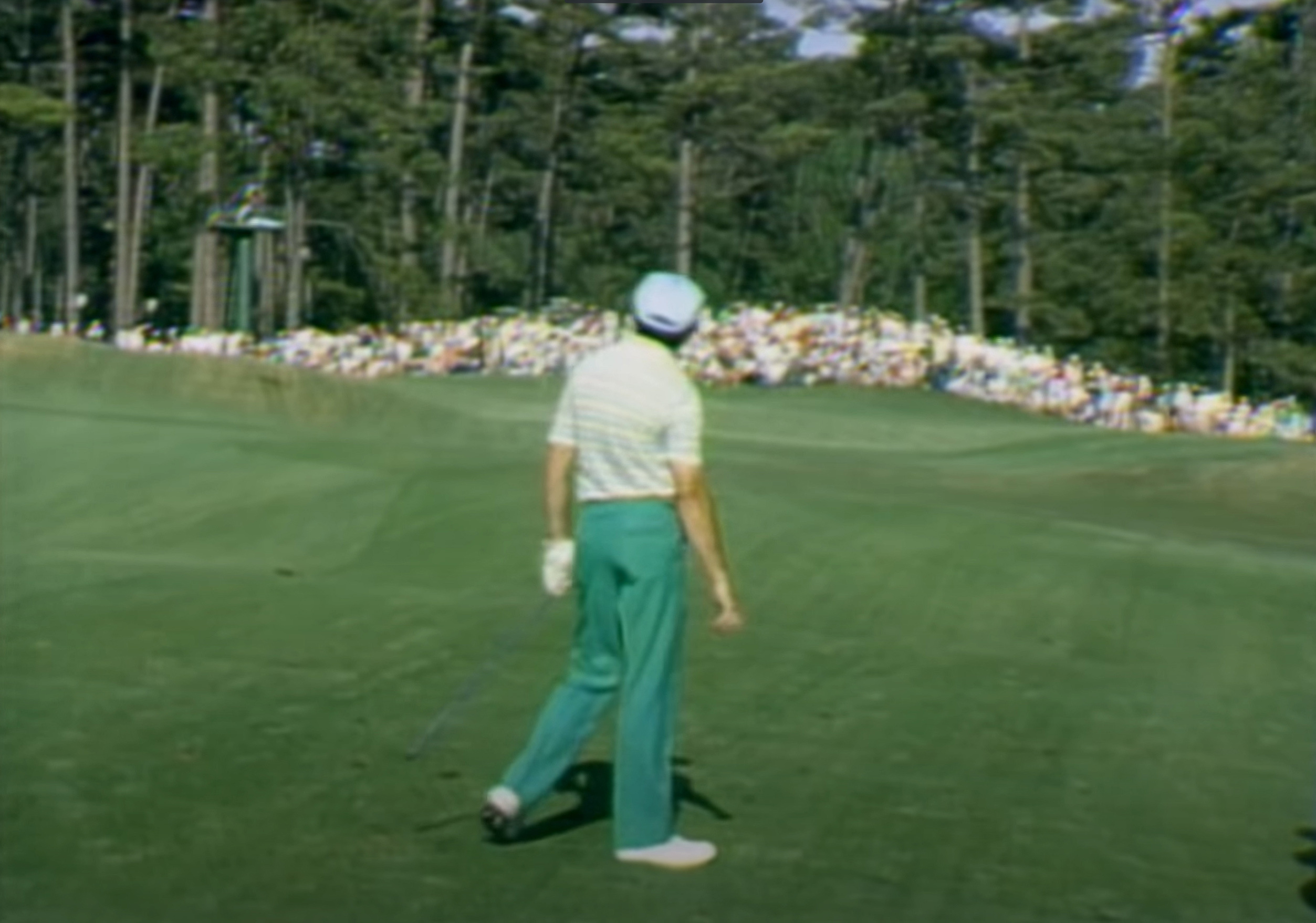
The 14th hole at Augusta National in 1978
-
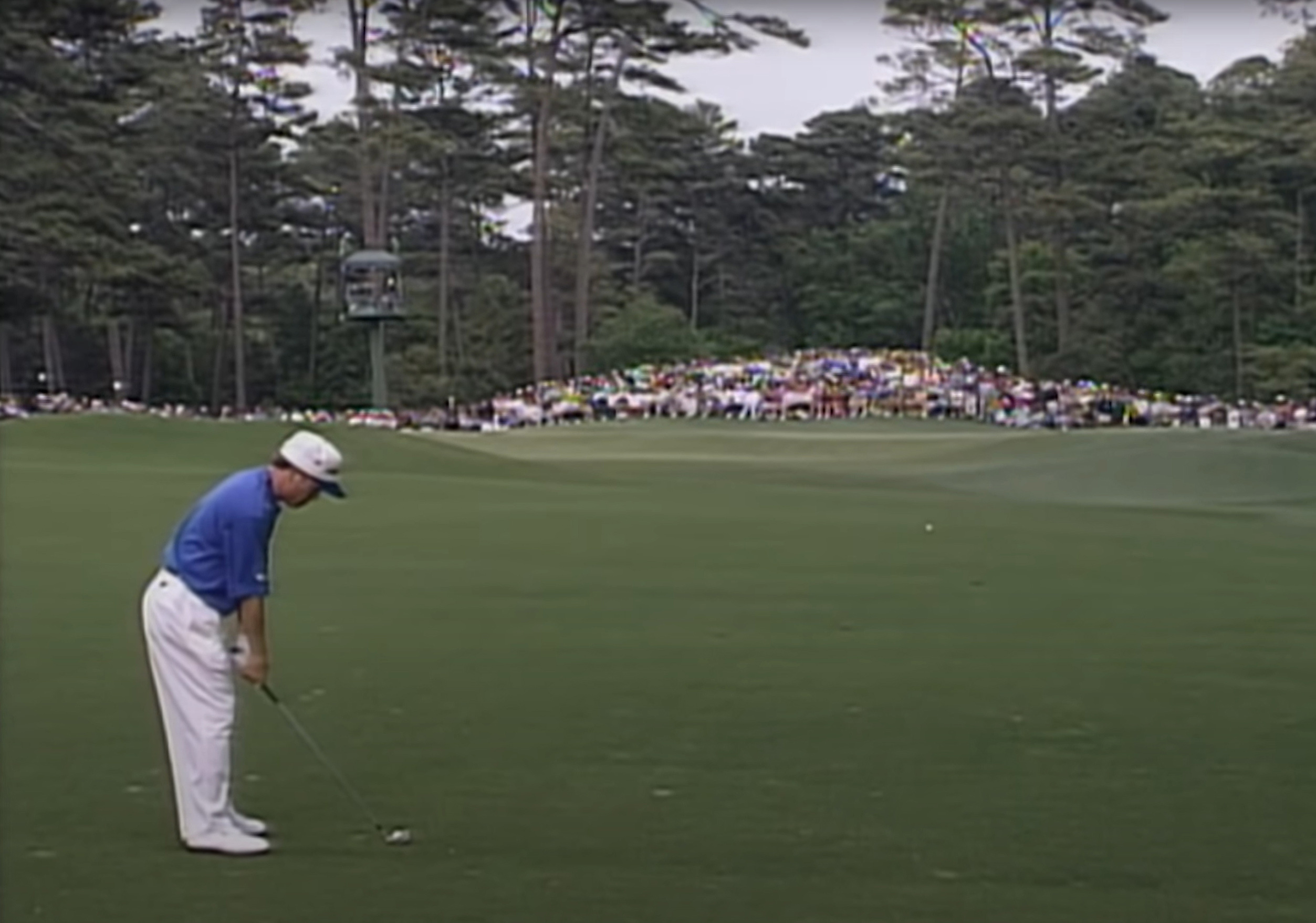
The 14th hole at Augusta National in 1997
-

The 14th hole at Augusta National in 1998
Even on a hole like the 11th, the existing mounds are a shadow of their original selves.
Anyone who has been lucky enough to walk the course has likely noticed that, at the very least, remnants of many ground contours still exist (e.g., approaching the 18th green, on the eighth fairway and approach). While the ground game may never fully return in the way some of us hope, challenging professionals by breaking up the ground with contours and restoring the scale of others to obscure and obstruct sightlines when players are out of position can create variety and anxiety on a golf course where missing spots by a yard can result in a 50-foot putt versus an eight-foot putt. The best part is, the precedent is already there! They just need to bring it back.
Re-create MacKenzie’s bunkering
By Andy Johnson
A particularly ambitious and controversial change would involve restoring the character of the original bunkers at Augusta National.
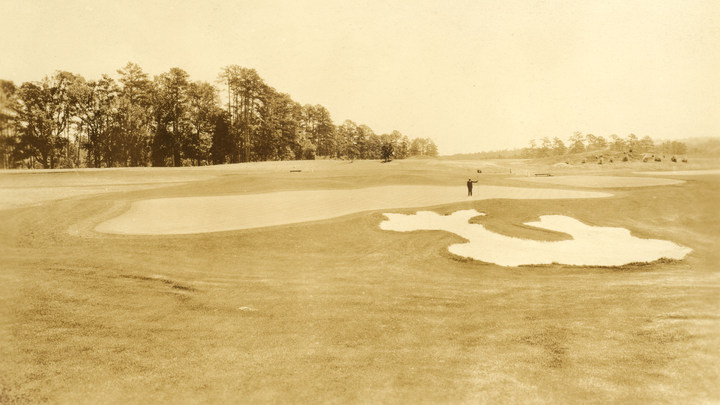
The original second green at Augusta National, with an Alister MacKenzie bunker (photo courtesy of Augusta National)
Alister MacKenzie had a reputation for creating some of the most artistic and beautiful bunkers during the Golden Age of golf course design. These bunkers underwent a significant transformation early in Augusta National’s history, evolving into the more economical saucer shapes seen today. Golfers marvel at the bunker shapes and designs at MacKenzie’s other courses, such as Cypress Point and Pasatiempo, and would likely be equally impressed if the original bunkers that graced the Augusta National property on its opening day in 1933 were restored.


 by
by 
